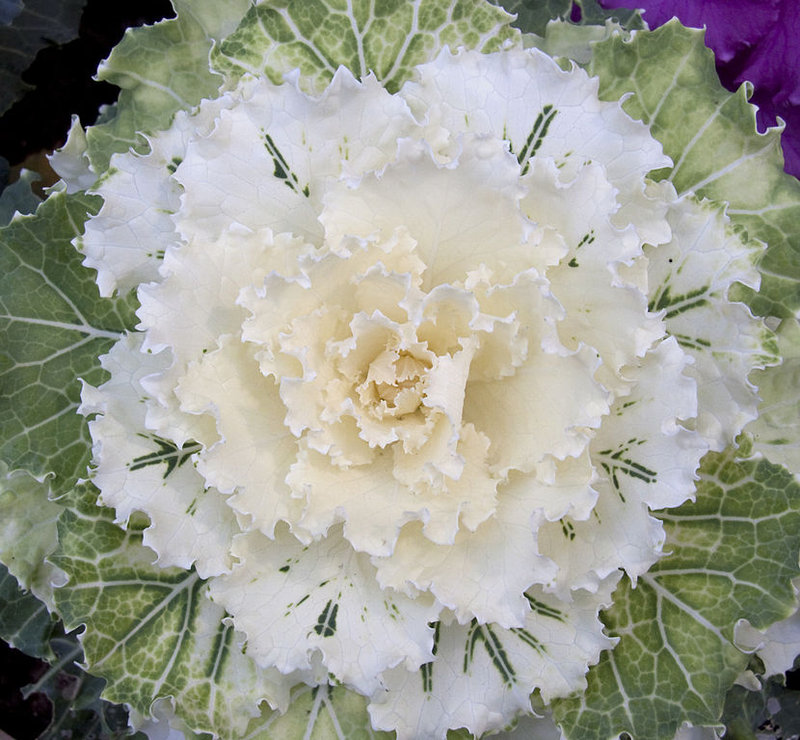Back to November 2016 Newsletter
I'm Coming Down with Cabbage Fever!

Suzanne Hanna
Ornamental cabbage and kale (Brassica oleracea) grow 1½’-2’ tall and have a spread of 1’ to 1 ½’. Both thrive in sunny sites. Because they can’t stand heat, they are often planted in the garden only in late August or early September so that they don’t become leggy and colourless. Sow seed indoors or out, before the first frost, after ensuring that the seed has been pre-chilled for three days in the fridge. Transplant when the seedlings are 3” tall, provide rich, fertile soil and fertilize with fish emulsion.
Lazy gardeners need not despair. You can buy ornamental brassicas as bedding plants at local garden centres in early fall. Buy the largest pots you can afford as they will not get any larger once they have been transplanted. Be on the lookout for pesky aphids and cabbage-worms on the seedlings. A friend of mine strews tomato leaves nearby to thwart white cabbage butterflies. I am not sure if it works but it’s worth trying!
To provide a kaleidoscope of colour and texture to your garden, be sure to use ornamental kale and cabbage to edge herb gardens, fill in containers and window boxes, and add a punch to rock gardens. My favourite combination is flowering magenta kale interspersed with orange calendulas and blue borage. They look yummy enough to eat!
If you decide to bring a pot of ornamental kale or cabbage indoors, be sure to follow the advice of Elisabeth Ginsburg, who suggests that you “treat it in the same way you would a Siberian Husky dog – house it out of direct sunlight, preferably in the coolest place available”. Once the plant begins to smell strongly of cooked cabbage, pitch it out!
My fellow seed savers in warmer parts of Canada look forward to the time in the spring when the tall, lanky seed stalk appears. They harvest the light brown pods from the healthiest plants of their chosen variety when they have ripened on the stalk. They then place the pods in brown paper bags and stomp on them to to make the pods break open and release the seeds. If stored properly, the seed remains viable for up to four years or so.
Don’t wait too long to indulge in some cabbage fever. These beauties won’t stay on the shelves for long!
**
Suzanne Hanna is the Chair of Seeds of Diversity's board of directors.
Photo: Ornamental cabbage 2. By Tony Hisgett from Birmingham, UK. CC BY 2.0 via Wikimedia Commons
Not yet a member?
An annual membership to Seeds of Diversity gives you access to our seed exchange, seed grow-out programs, and our online news.

We depend on donations to do our work.

Thank you for your support!
